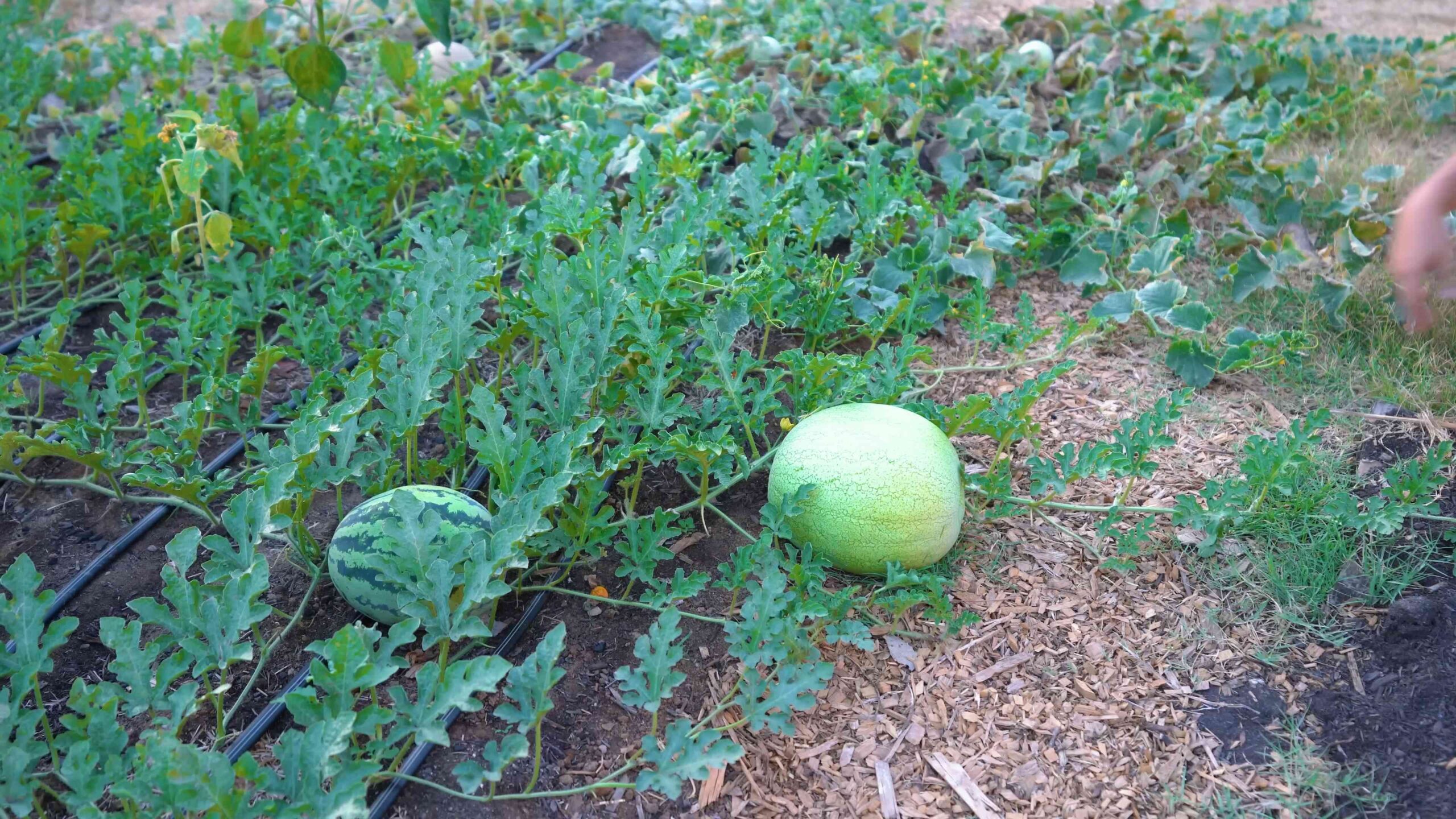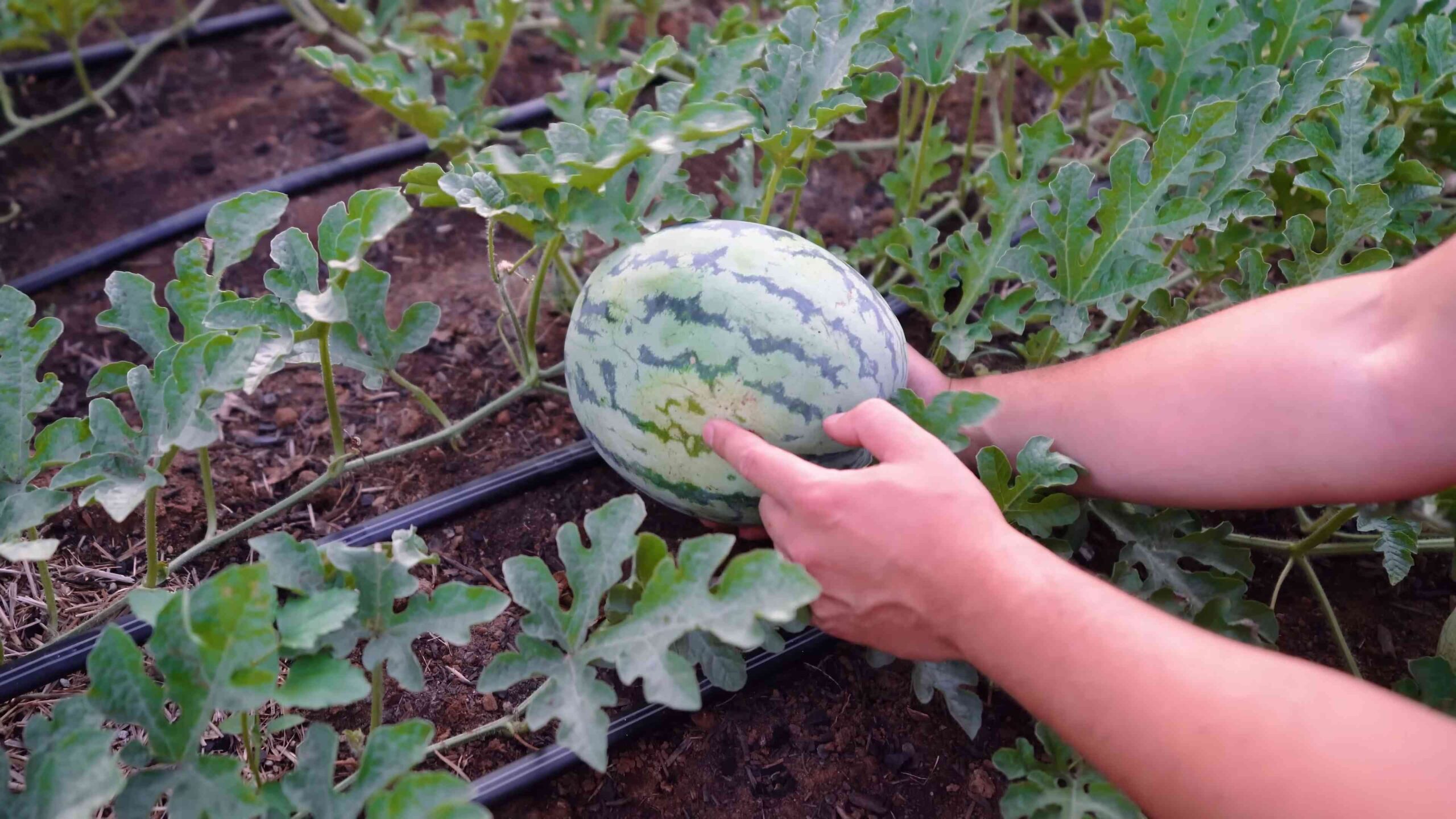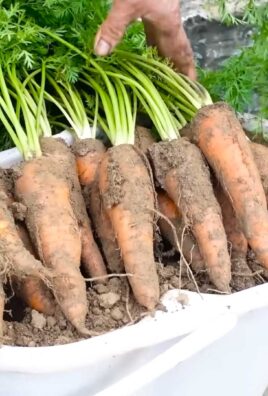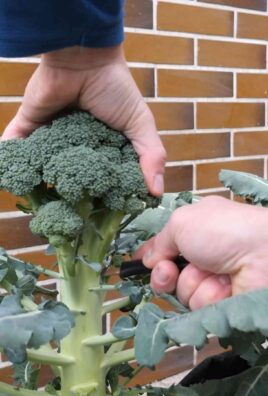Grow Watermelon in Your Garden and taste the sweet success of summer! Imagine biting into a juicy, homegrown watermelon, the vibrant red flesh bursting with flavor – a flavor far superior to anything you can find in a grocery store. Sounds tempting, right? Well, it’s absolutely achievable, even if you don’t have acres of land.
For centuries, watermelons have been a symbol of summer abundance and a refreshing treat enjoyed across cultures. From ancient Egypt, where they were depicted in hieroglyphics, to modern-day picnics, watermelons hold a special place in our hearts (and stomachs!). But the idea of growing your own can seem daunting. That’s where these DIY tricks and hacks come in!
Let’s face it, store-bought watermelons can be expensive and often lack that intense, sun-ripened sweetness. Plus, there’s nothing quite like the satisfaction of nurturing a plant from seed to fruit. I’m here to show you that you don’t need a green thumb or a huge garden to grow watermelon in your garden. With a few clever techniques and some insider knowledge, you can enjoy delicious, homegrown watermelons all summer long. This article is packed with easy-to-follow tips and DIY solutions that will help you overcome common challenges and maximize your watermelon harvest. So, grab your gardening gloves, and let’s get started!

Growing Watermelons: A Beginner’s Guide to Sweet Success!
Hey there, fellow gardening enthusiasts! I’m so excited to share my experience growing watermelons – those juicy, refreshing symbols of summer. It might seem daunting, but trust me, with a little planning and effort, you can harvest your own delicious watermelons right in your backyard. Let’s dive in!
Choosing the Right Watermelon Variety
Before we get our hands dirty, let’s talk about watermelon varieties. Not all watermelons are created equal, and choosing the right one for your climate and garden size is crucial.
* **Consider your climate:** Some varieties thrive in shorter growing seasons, while others need long, hot summers.
* **Think about space:** Bush varieties are perfect for smaller gardens, while vining types need plenty of room to sprawl.
* **Flavor preferences:** Do you prefer seedless, red-fleshed, or yellow-fleshed watermelons?
Here are a few popular varieties to consider:
* **Sugar Baby:** A classic, compact variety that matures quickly, perfect for smaller gardens and cooler climates.
* **Crimson Sweet:** A widely grown, reliable variety with sweet, red flesh and good disease resistance.
* **Black Diamond:** A large, dark green watermelon with deep red flesh, known for its excellent flavor.
* **Yellow Doll:** A unique variety with sweet, yellow flesh and a crisp texture.
* **Bush Sugar Baby:** An even more compact version of Sugar Baby, ideal for container gardening.
Once you’ve chosen your variety, it’s time to gather your supplies!
Gathering Your Supplies
To successfully grow watermelons, you’ll need the following:
* **Watermelon seeds or seedlings:** Purchase from a reputable source to ensure quality.
* **Well-draining soil:** Watermelons need soil that drains well to prevent root rot.
* **Compost or aged manure:** To enrich the soil and provide essential nutrients.
* **Fertilizer:** A balanced fertilizer (e.g., 10-10-10) or a fertilizer specifically formulated for melons.
* **Gardening gloves:** To protect your hands.
* **Trowel or shovel:** For planting.
* **Watering can or hose:** For watering your plants.
* **Mulch:** To help retain moisture and suppress weeds.
* **Row covers (optional):** To protect young plants from pests and cold weather.
* **Trellis (optional):** For supporting vining varieties in smaller spaces.
Preparing the Soil
Watermelons are heavy feeders, so preparing the soil properly is essential for a bountiful harvest.
1. **Choose a sunny location:** Watermelons need at least 6-8 hours of direct sunlight per day.
2. **Test your soil:** A soil test will tell you the pH level and nutrient content of your soil. Watermelons prefer a slightly acidic soil pH of 6.0-6.8.
3. **Amend the soil:** Dig in plenty of compost or aged manure to improve drainage and fertility. I usually add a generous amount – about 4-6 inches deep.
4. **Add fertilizer:** Incorporate a balanced fertilizer into the soil according to the package directions.
5. **Create mounds or rows:** Watermelons grow best in raised mounds or rows, which help with drainage and warming the soil. Space the mounds or rows about 3-4 feet apart.
Planting Watermelon Seeds or Seedlings
Now comes the fun part – planting!
1. **Start seeds indoors (optional):** If you live in a cooler climate with a shorter growing season, you can start watermelon seeds indoors 3-4 weeks before the last expected frost. Sow the seeds in peat pots or biodegradable containers to avoid disturbing the roots when transplanting.
2. **Direct sow seeds:** Once the soil has warmed up to at least 70°F (21°C), you can direct sow watermelon seeds directly into the garden. Plant the seeds about 1 inch deep and 2-3 inches apart.
3. **Transplant seedlings:** If you started seeds indoors, harden off the seedlings by gradually exposing them to outdoor conditions for a week before transplanting. Plant the seedlings in the prepared mounds or rows, spacing them about 2-3 feet apart.
4. **Water thoroughly:** After planting, water the seeds or seedlings thoroughly.
5. **Apply mulch:** Apply a layer of mulch around the plants to help retain moisture, suppress weeds, and keep the soil warm. I like to use straw or shredded leaves.
Caring for Your Watermelon Plants
Watermelons need consistent care to thrive and produce sweet, juicy fruits.
1. **Water regularly:** Watermelons need plenty of water, especially during hot, dry weather. Water deeply and regularly, aiming for about 1-2 inches of water per week. Avoid overhead watering, which can lead to fungal diseases.
2. **Fertilize:** Fertilize your watermelon plants every 2-3 weeks with a balanced fertilizer or a fertilizer specifically formulated for melons. Follow the package directions carefully.
3. **Weed regularly:** Keep the garden free of weeds, which can compete with your watermelon plants for nutrients and water.
4. **Prune (optional):** Some gardeners prune their watermelon plants to encourage larger fruits. To prune, remove any suckers (small shoots that grow from the base of the plant) and any excess vines.
5. **Protect from pests and diseases:** Watermelons can be susceptible to various pests and diseases, such as aphids, squash bugs, and powdery mildew. Inspect your plants regularly and take action promptly if you notice any problems. Use organic pest control methods whenever possible.
6. **Support the fruits (optional):** As the watermelons grow larger, you may need to support them to prevent them from rotting on the ground. You can use a piece of wood, a brick, or a melon cradle to elevate the fruits.
Pollination
Watermelons need to be pollinated to produce fruit. They have both male and female flowers on the same plant. Bees are the primary pollinators, so encourage them to visit your garden by planting flowers that attract bees.
If you’re not seeing enough bees, you can hand-pollinate your watermelon flowers. To hand-pollinate, use a small paintbrush to transfer pollen from the male flowers to the female flowers. The female flowers have a small, immature watermelon at the base of the flower.
Harvesting Your Watermelons
The most exciting part of growing watermelons is harvesting your own sweet, juicy fruits!
1. **Check for ripeness:** Watermelons are typically ready to harvest 80-100 days after planting, depending on the variety. There are several ways to check for ripeness:
* **The tendril test:** The tendril closest to the fruit should be brown and dry.
* **The ground spot test:** The spot where the watermelon rests on the ground should be yellow or cream-colored.
* **The thump test:** A ripe watermelon will sound hollow when you thump it.
2. **Harvest carefully:** Use a sharp knife or pruning shears to cut the watermelon from the vine, leaving a few inches of stem attached.
3. **Enjoy!** Store your harvested watermelons in a cool, dry place. They will keep for several weeks.
Troubleshooting
Even with the best care, you may encounter some problems while growing watermelons. Here are a few common issues and how to address them:
* **Poor fruit set:** This can be caused by lack of pollination, cold weather, or nutrient deficiencies. Hand-pollinate your flowers, protect your plants from cold weather, and fertilize regularly.
* **Blossom-end rot:** This is caused by calcium deficiency. Amend the soil with lime or bone meal before planting and water regularly.
* **Cracked fruits:** This can be caused by inconsistent watering. Water deeply and regularly, especially during hot, dry weather.
* **Pests and diseases:** Inspect your plants regularly and take action promptly if you notice any problems. Use organic pest control methods whenever possible.
Tips for Success
Here are a few extra tips to help you grow the best watermelons possible:
* **Choose a variety that is well-suited to your climate and garden size.**
* **Prepare the soil properly by adding plenty of compost or aged manure.**
* **Water deeply and regularly, especially during hot, dry weather.**
* **Fertilize your plants every 2-3 weeks.**
* **Protect your plants from pests and diseases.**
* **Be patient!** It takes time for watermelons to mature.
Growing watermelons can be a rewarding experience. With a little planning and effort, you can enjoy your own sweet, juicy watermelons all summer long. Happy gardening!

Conclusion
So, there you have it! Growing watermelons in your own garden, while it might seem daunting at first, is absolutely achievable and incredibly rewarding. We’ve walked through the essential steps, from selecting the perfect variety for your climate to nurturing those precious seedlings and finally, harvesting the sweet fruits of your labor.
Why is this DIY trick a must-try? Because nothing beats the taste of a homegrown watermelon, bursting with flavor and sunshine. Forget those bland, store-bought melons that lack character. With a little effort and dedication, you can cultivate watermelons that are sweeter, juicier, and more satisfying than anything you can buy. Plus, you’ll have the satisfaction of knowing exactly where your food came from and how it was grown, free from harmful pesticides and chemicals.
Beyond the superior taste, growing your own watermelons is a fantastic way to connect with nature, learn about the growing process, and even save money in the long run. It’s a project that the whole family can enjoy, from planting the seeds to eagerly anticipating the harvest.
Looking for variations? Consider experimenting with different watermelon varieties. Perhaps you’d like to try a smaller, personal-sized watermelon like Sugar Baby, or a unique yellow-fleshed variety like Yellow Doll. You can also explore different growing techniques, such as vertical gardening with trellises to save space or using raised beds to improve drainage. For an extra boost, try companion planting. Marigolds can deter pests, while herbs like basil can enhance the flavor of your watermelons.
Don’t be afraid to get your hands dirty and embrace the challenge. Growing watermelons is a journey, and even if you encounter a few bumps along the way, the end result is well worth the effort. The key is to provide your watermelons with plenty of sunshine, water, and nutrients, and to protect them from pests and diseases.
We encourage you to take the plunge and try this DIY trick for yourself. Imagine the joy of biting into a perfectly ripe, homegrown watermelon on a hot summer day. It’s an experience you won’t soon forget.
And most importantly, we want to hear about your experiences! Share your tips, tricks, and triumphs in the comments below. Let us know what watermelon varieties you’re growing, what challenges you’ve faced, and what you’ve learned along the way. Your insights can help other gardeners succeed in their own watermelon-growing adventures. Let’s create a community of watermelon enthusiasts, sharing our knowledge and passion for this delicious fruit. So go ahead, get planting, and let the watermelon magic begin! Remember, the sweetest rewards come from the seeds you sow yourself. Mastering the art of growing watermelons is a skill that will bring joy and deliciousness to your life for years to come.
Frequently Asked Questions (FAQ)
Q: What is the best time to plant watermelon seeds?
A: Watermelons are warm-weather crops and thrive in temperatures between 70°F and 90°F (21°C and 32°C). The best time to plant watermelon seeds is after the last frost, when the soil temperature has warmed up to at least 65°F (18°C). In most regions, this is typically in late spring or early summer. You can start seeds indoors 3-4 weeks before the last expected frost to get a head start.
Q: How much space do watermelons need to grow?
A: Watermelons are sprawling plants and require plenty of space to grow. Allow at least 3-4 feet between plants and 6-8 feet between rows. If you’re growing watermelons on a trellis, you can reduce the spacing somewhat, but still ensure that each plant has adequate room to develop. Smaller varieties like Sugar Baby can be grown closer together than larger varieties.
Q: What kind of soil is best for growing watermelons?
A: Watermelons prefer well-drained, sandy loam soil that is rich in organic matter. The soil pH should be between 6.0 and 6.8. Before planting, amend the soil with compost or well-rotted manure to improve drainage and fertility. Avoid heavy clay soils, as they can retain too much moisture and lead to root rot.
Q: How often should I water my watermelons?
A: Watermelons need consistent watering, especially during hot, dry weather. Water deeply at least once a week, providing about 1-2 inches of water. Avoid overhead watering, as this can promote fungal diseases. Instead, water at the base of the plant, using a soaker hose or drip irrigation system. Reduce watering as the fruits begin to ripen to prevent them from splitting.
Q: What are some common pests and diseases that affect watermelons?
A: Common pests that affect watermelons include aphids, squash bugs, cucumber beetles, and vine borers. Diseases include powdery mildew, fusarium wilt, and anthracnose. Regularly inspect your plants for signs of pests or diseases and take appropriate action. Use organic pest control methods, such as insecticidal soap or neem oil, to control pests. Ensure good air circulation and avoid overhead watering to prevent fungal diseases.
Q: How do I know when a watermelon is ripe?
A: Determining when a watermelon is ripe can be tricky, but there are a few telltale signs to look for. First, check the tendril closest to the fruit. When it turns brown and dries up, the watermelon is likely ripe. Second, look at the spot where the watermelon rests on the ground. This spot should be yellow or cream-colored, not white. Finally, thump the watermelon. A ripe watermelon will sound hollow and deep.
Q: Can I grow watermelons in containers?
A: Yes, you can grow watermelons in containers, but you’ll need a large container (at least 20 gallons) and a dwarf or bush variety of watermelon. Ensure that the container has good drainage and use a high-quality potting mix. Water regularly and fertilize every 2-3 weeks with a balanced fertilizer. Provide support for the vines as they grow.
Q: What kind of fertilizer should I use for watermelons?
A: Watermelons benefit from regular fertilization. Use a balanced fertilizer (e.g., 10-10-10) at planting time and then side-dress with a nitrogen-rich fertilizer when the vines begin to run. Once the fruits start to develop, switch to a fertilizer that is higher in phosphorus and potassium to promote fruit development and sweetness.
Q: How can I improve the sweetness of my watermelons?
A: To improve the sweetness of your watermelons, ensure that they receive plenty of sunshine (at least 6-8 hours per day). Water regularly, but reduce watering as the fruits begin to ripen. Fertilize with a fertilizer that is high in potassium, which promotes sugar production. Avoid over-fertilizing with nitrogen, as this can lead to excessive vine growth and reduced fruit sweetness.
Q: What are some good companion plants for watermelons?
A: Good companion plants for watermelons include marigolds (which deter pests), basil (which enhances flavor), nasturtiums (which attract beneficial insects), and radishes (which repel squash bugs). Avoid planting watermelons near potatoes or tomatoes, as they can compete for nutrients.
Q: My watermelon plant is producing flowers, but no fruit. What could be the problem?
A: There are several reasons why your watermelon plant might be producing flowers but no fruit. One possibility is that the plant is not being adequately pollinated. Watermelons require pollination to set fruit. You can hand-pollinate the flowers by transferring pollen from the male flowers to the female flowers using a small brush. Another possibility is that the plant is stressed due to lack of water or nutrients. Ensure that you are providing adequate water and fertilizer. Finally, the weather may be too cool for fruit set. Watermelons need warm temperatures to produce fruit.





Leave a Comment